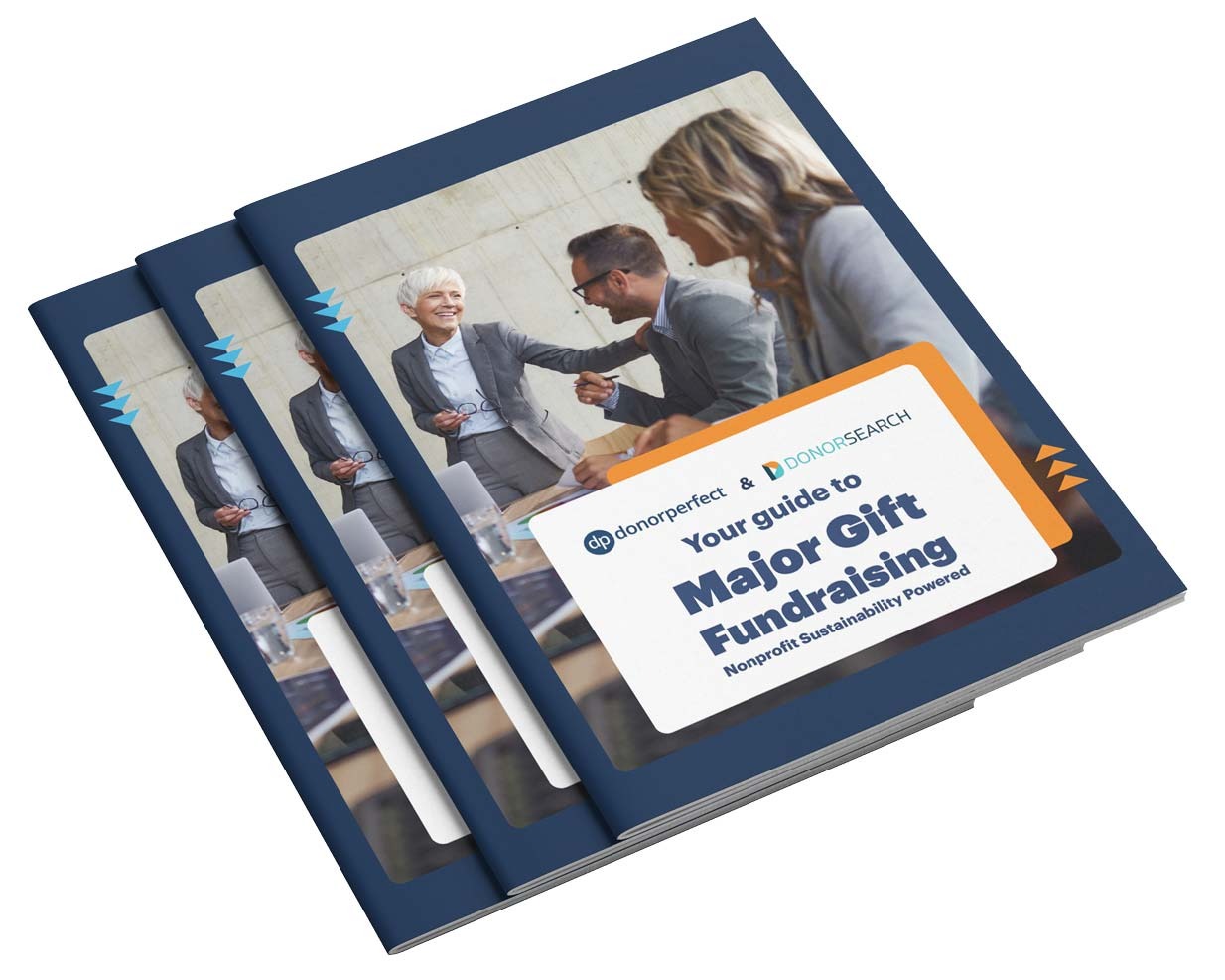Nonprofit Technology & Fundraising Blog
Subscribe to our mailing list

August 5, 2025 | Donor Acquisition, Donor Data, Donor Engagement, Major Donors
Written by major gift strategist Tammy Zonker, President of Fundraising Transformed and the Modern Institute for Charitable Giving. Learn more about Tammy >>
One of the most common pain points I hear from colleagues is the struggle to define what constitutes a “major donor.” There’s no universal threshold. For a small community nonprofit, a $5,000 gift might be transformational, while for a large university, major gifts may start at $100,000 or more. Early in my career, I made the mistake of chasing “big fish” based on someone else’s definition, only to realize that meaningful giving is deeply contextual.
Key takeaway: Define a major donor based on your organization’s unique needs, budget, and strategic goals. This clarity will focus your team’s efforts where they matter most.
In my experience, major donors are not motivated by recognition alone. They want to see their values reflected in your mission, to create a lasting impact, and to leave a legacy.
Practical strategies:
I’ve found that prospect research is both an art and a science. Today’s best practices involve a blend of wealth screening, affinity indicators, and AI-driven insights. Tools like DonorPerfect can help you identify capacity, but don’t overlook “giving signals” such as event attendance, volunteerism, or social media engagement.
One approach I’ve seen work well:
Learn how prospect research tools work in the DonorPerfect system! Explore its integration with DonorSearch in this free guide: Your Guide to Major Gift Fundraising.

No matter how sophisticated your research, you still need a story that moves hearts and minds. I always advise teams to focus on vision, urgency, and outcomes. Donors want to know: Why now? What will their gift make possible? What’s at stake if they don’t give? Big visions attract big gifts.
Case study:
At one organization I worked with, we reframed our annual campaign around a bold vision for expanding mental health services in a historically excluded community. By articulating the urgent need and specific outcomes, we secured three new six-figure gifts from donors who had previously given at much lower levels.
Social capital is your most powerful door-opener. I’ve seen countless examples where a warm introduction from a board member or peer led to a first meeting that would never have happened through cold outreach. Encourage your board to open doors, make introductions, and share their own giving stories.
Action steps:
The first touchpoint with a prospective major donor sets the tone for the entire relationship. In my experience, a personalized, respectful, and relevant approach stands out. Avoid generic emails or mass mailings. Reference something specific about their interests or past involvement.
Example:
A colleague once sent a handwritten note referencing a donor’s recent speech at a community event. That small gesture opened the door to a meeting and, eventually, a transformational gift.
Key takeaways:
If there’s one thing I’ve learned in nearly 30 years, it’s that major donors are people first. They want to be inspired, respected, and engaged in meaningful ways. Don’t be afraid to start small, experiment, and learn as you go. Every organization—and every donor—is different, but the fundamentals of building genuine relationships never change.
I encourage you:
Let’s keep this conversation going! I’d love to hear about your successes and challenges, and I’m always happy to offer advice or a listening ear. Together, we can spark the kind of transformational giving that changes lives—not just for your organization and program participants, but for your donors, as well.
Stay tuned for Part 2 of this series, where I’ll share my best tips on how to retain major donors and turn that first gift into a lifelong partnership. In the meantime, feel free to send me your questions or share this post with colleagues who might benefit.
Created for development professionals by Tammy Zonker and DonorPerfect
Follow us on social!